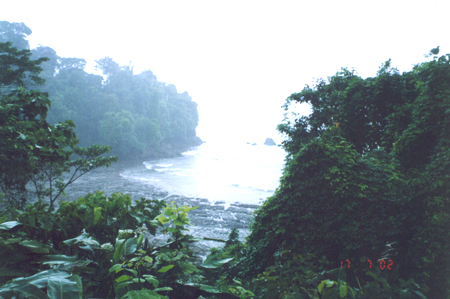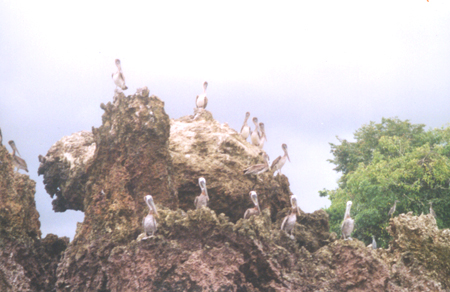

 |
 |
Miscellany
My trip to the South American rainforest
by Elsa Lee
I took a trip of a lifetime to somewhere I think very few Hong Kong people would go, or even think about going to – Colombia. It was a very hard decision to visit Colombia, especially with the sensitive politics there, but for the rainforest, I would do anything!
I joined an Ecovolunteer project (www.ecovolunteer.org), which arranges for people to visit scientific research stations in many parts of the world to help with conservation work. For this trip I went to El Amargal Biological Station, under the Fundación Inguede (a private conservation organization in Colombia), on the Pacific Coast of the Chocó department of the country. The station is in a very isolated place. From Bogotá (the capital of Colombia) I took two one-hour flights to the little village of Nuquí, then a 2 hour boat-trip to arrive at the station. However, El Amargal is well worth the tiring and somewhat dangerous transport needed to get there. The view from the house up on the cliff is magnificent, with groups of pelicans and egrets flying past every now and then. The sea in front of the station is on the path of the migration route of humpback whales: during my stay I saw them three times! In the forest I saw many animals: toucans, hummingbirds, parrots, tanagers, lizards, frogs, howler monkeys, and numerous insects. Every tree in the forest is huge, with many epiphytes attached, and one of the largest trees in the plot under study has a diameter of 180 cm (as part of my voluntary work there was helping to measure trees). The forest is so dense and huge that you could not walk alone for 15 minutes without being lost; in fact, even with a guide we got lost once.
Before I took this trip I couldn’t imagine myself being in a rainforest, as the wildlife there is so wonderful, the life-style so different from Hong Kong, and I met many different people, including the very friendly neighbouring Indians. All I wish is that more people could see and experience the true beauty of nature, protect it and keep it the way it is.
 |
| Standing just next to the station (the hut behind) enjoying sunlight. |
 |
| The view from the balcony of the station on a rainy day. Heavy rain and storm constitutes almost 2/3 of the time in the rainforest. |
 |
| Such groups of pelicans ( Pelecanus occidentalis) are everywhere! |
|
|
P.21 |
|
Porcupine! |
 Copyright © 2000 |